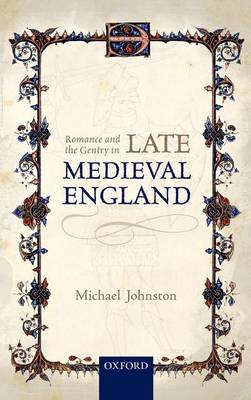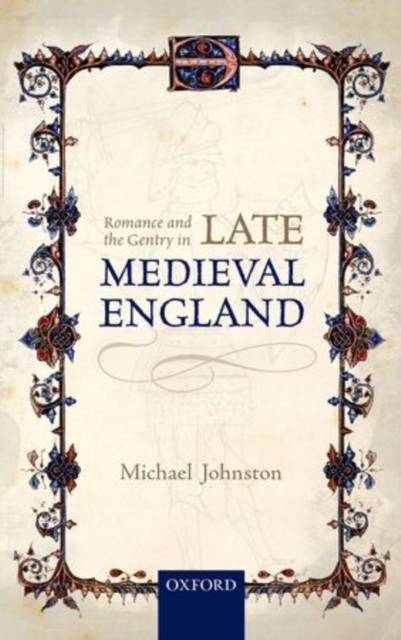
- Afhalen na 1 uur in een winkel met voorraad
- Gratis thuislevering in België vanaf € 30
- Ruim aanbod met 7 miljoen producten
- Afhalen na 1 uur in een winkel met voorraad
- Gratis thuislevering in België vanaf € 30
- Ruim aanbod met 7 miljoen producten
Zoeken
€ 175,95
+ 351 punten
Omschrijving
Romance and the Gentry in Late Medieval England offers a new history of Middle English romance, the most popular genre of secular literature in the English Middle Ages. Michael Johnston argues that many of the romances composed in England from 1350-1500 arose in response to the specific socio-economic concerns of the gentry, the class of English landowners who lacked titles of nobility and hence occupied the lower rungs of the aristocracy. The end of the fourteenth century in England witnessed power devolving to the gentry, who became one of the dominant political and economic forces in provincial society. As Johnston demonstrates, this social change also affected England's literary culture, particularly the composition and readership of romance. Romance and the Gentry in Late Medieval England identifies a series of new topoi in Middle English that responded to the gentry's economic interests. But beyond social history and literary criticism, it also speaks to manuscript studies, showing that most of the codices of the "gentry romances" were produced by those in the immediate employ of the gentry. By bringing together literary criticism and manuscript studies, this book speaks to two scholarly communities often insulated from one another: it invites manuscript scholars to pay closer attention to the cultural resonances of the texts within medieval codices; simultaneously, it encourages literary scholars to be more attentive to the cultural resonances of surviving medieval codices.
Specificaties
Betrokkenen
- Auteur(s):
- Uitgeverij:
Inhoud
- Aantal bladzijden:
- 318
- Taal:
- Engels
Eigenschappen
- Productcode (EAN):
- 9780199679782
- Verschijningsdatum:
- 12/08/2014
- Uitvoering:
- Hardcover
- Formaat:
- Genaaid
- Afmetingen:
- 218 mm x 137 mm
- Gewicht:
- 521 g

Alleen bij Standaard Boekhandel
+ 351 punten op je klantenkaart van Standaard Boekhandel
Beoordelingen
We publiceren alleen reviews die voldoen aan de voorwaarden voor reviews. Bekijk onze voorwaarden voor reviews.











